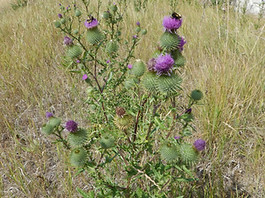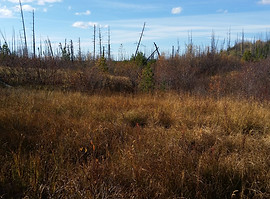
ASSESSMENT

Desktop and Field Baseline Assessments
Desktop assessments form the initial data-gathering activity for most project applications on private and public lands. In addition, the desktop assessment forms the foundation for the design of more detailed soil and vegetation studies. These studies support application development through the quantitative and qualitative assessment and discipline technical reporting process needed to establish a resource baseline. This body of information allows for the identification of any potential residual environmental effects of construction and the development of methods and measures to mitigate potential effects.

Pre-Disturbance Assessments (Soils, Terrain and Vegetation)
-
Pre-Construction Soil and Vegetation
-
Watercourse and Wetland Riparian Restoration
-
Erosion and Sediment Control
-
Vegetation Management - Weed Survey
PLANNING
PLANNING

Reclamation / Naturalization / Restoration
All projects require site-specific soil management and revegetation planning to meet regulatory requirements. David has participated in the planning and monitoring of 100's of projects. He has the experience to manage large reclamation programs within grassland, riparian (wetland/watercourse), forested, and cultivated land uses within western Canada.

Environmental Protection (EPP and ECO Plan)
As a key component of all commercial, industrial and natural resource developments, vegetation and soil conservation and reclamation management planning is completed as a component of overall environmental protection mitigation for linear and sited projects in western Canada.

Wetland and Watercourse Riparian Restoration / Construction
Detailed riparian restoration programs are developed to reconstruct watercourse riparian zones and to enhance and restore wetlands with the goal of establishing an ecological recovery trajectory, that will over time, emulate the ecosystem characteristics that existed prior to the disturbance or that are currently observed adjacent to the site.

Erosion and Sediment Control
Erosion and sediment control planning is a component of all applications for commercial, industrial and residential developments. David is a certified Erosion and Sediment Control professional with Envirocert International.

Vegetation Management (weed control)
Baseline weed survey data, applicable legislation and the clients vegetation management standards are used to develop a vegetation management plan for the project. David has contributed to many vegetation management plans and routinely prescribes appropriate vegetation management methods (cultural, mechanical and chemical) to be implemented and monitored during the life-cycle of the project.

Reclamation and Closure Mine, Quarry, and Pit s - Private and Public Lands
Baseline soil, terrain, and vegetation data is used in conjunction with knowledge of end land use and stakeholder values during the development of operational, and closure reclamation plans. These plans are designed to meet the requirements of applicable municipal, provincial, and federal acts and regulations.

Reclamation Certification
Sites are assessed for specific landscape, soil, and vegetation parameters (e.g., Reclamation Criteria for Wellsites and Associated Facilities) to identify the current state of reclamation with the goal of achieving equivalent land capability. Once these parameters are met, an application is made to the regulator on behalf of the client to receive reclamation certification.
MONITORING

Erosion and Sediment Control
Inspection of municipal, linear commercial/industrial and sited developments to ensure the approved erosion and sediment control plan is executed.

Construction Resource Specialist
David provides soil handling, re-vegetation, and reclamation construction monitoring to support the construction environmental team, and reviews the discipline-specific environmental protection mitigation (including management and contingency plans) and provides technical guidance to reduce the effects of construction on the environment.

Post-Construction Reclamation
Following construction, landscape, soil, and vegetation parameters are qualitatively and quantitatively assessed to determine the success of reclamation and if the reclaimed footprint is on trajectory to meeting the goal of equivalent land capability.

Detailed Site Assessment
Sites are assessed to identify the current state of reclamation with the goal of meeting specific landscape, soil and vegetation parameters. Once these parameters are met, an application is made to the regulator on behalf of the client to receive reclamation certification.
